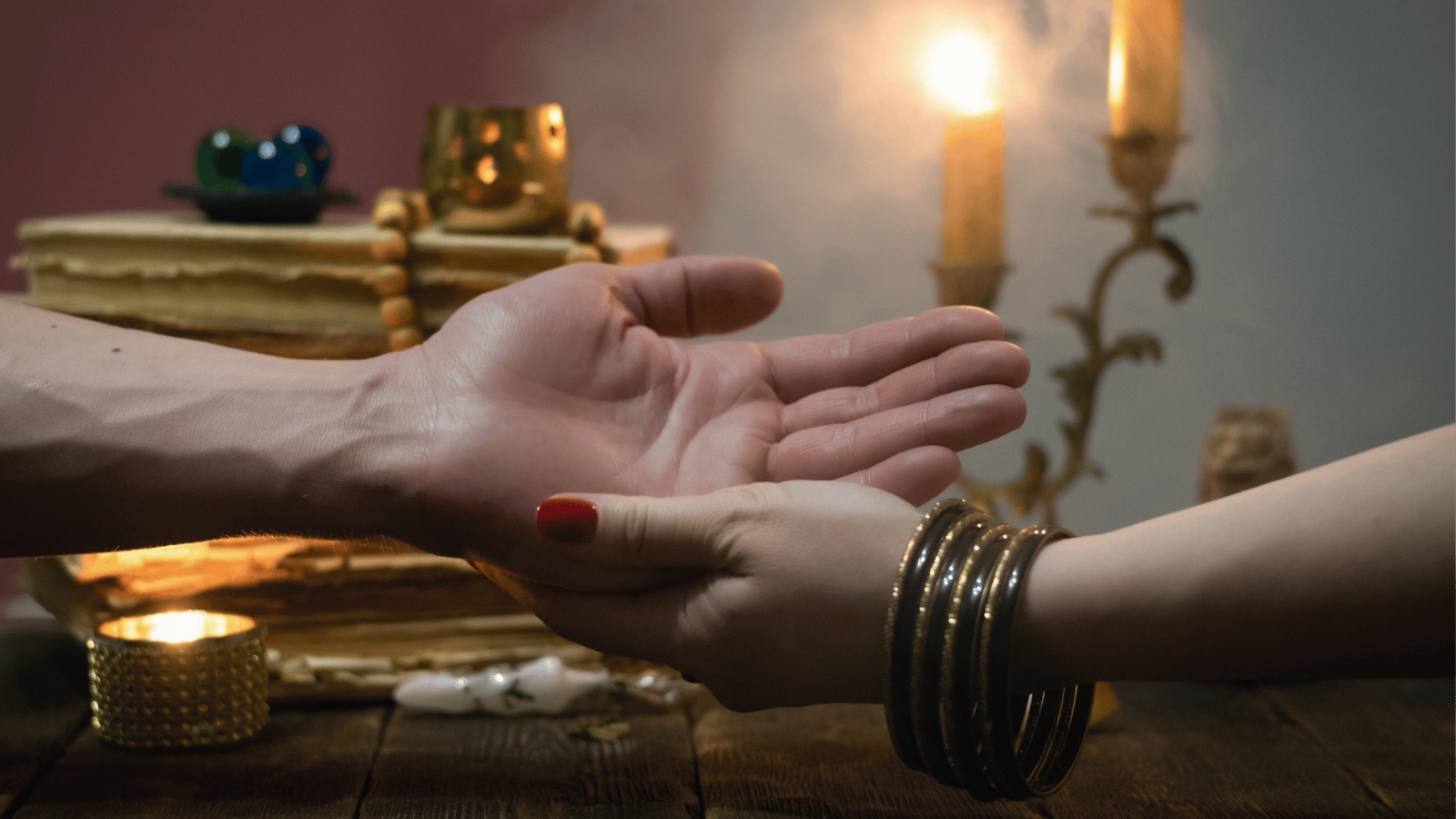Blog
The Art of Palmistry: Unveiling Predictions Through the Lines of Your Hands
Author: Astrologer
Category: Astrology
Posted on: Jul 08, 2024

Introduction
Palmistry, also known as chiromancy, is the ancient practice of interpreting the lines and features of the hands to predict the future and understand one's personality. This mystical art has been practiced for thousands of years across various cultures, from ancient India and China to Greece and Egypt. The allure of palmistry lies in its promise to reveal insights about our destiny and character, all through the intricate patterns etched on our palms. In this blog, we will explore the fundamentals of palmistry, how it works, and what the different lines and mounts of the hand signify. Whether you are a skeptic or a believer, the fascinating world of palmistry offers a unique lens through which to view our lives.
Also read - Exploring Ancient Wisdom of Vedic Astrology and Palmistry
The Basics of Palmistry
Palmistry is based on the idea that the hands are a map of our life path. The primary components that palmists examine include the major lines, minor lines, mounts, and other markings. Each of these elements is believed to correspond to different aspects of our lives and personalities.
Major Lines
The Life Line: This line runs around the base of the thumb and is thought to represent one's vitality and life force. Contrary to popular belief, the life line does not predict the length of one's life but rather the quality and energy of it. A long, deep life line suggests a robust and energetic individual, while a faint or broken line might indicate a more cautious or health-challenged person.
The Heart Line: Located above the life line, this line curves from the edge of the palm under the pinky finger towards the index finger. It is associated with emotional health and romantic relationships. A deep, clear heart line indicates strong emotional stability and satisfying relationships, while a broken or wavy line might signify emotional turmoil or difficulties in love.
The Head Line: This line runs horizontally across the middle of the palm, starting near the life line. It represents intellectual pursuits and mental clarity. A straight head line suggests a logical and practical thinker, whereas a curved line indicates creativity and spontaneity.
Chat here: Chat with astrologer online
The Fate Line: Not everyone has a fate line, but when present, it runs vertically from the base of the palm towards the middle finger. It is believed to reflect one's career path and life direction. A strong fate line denotes a clear sense of purpose and success, while an interrupted or absent fate line may suggest a more unpredictable or flexible career journey.
Minor Lines and Other Markings
In addition to the major lines, palmists also examine several minor lines and other features of the hand:
The Sun Line: This line runs parallel to the fate line and is often associated with fame, luck, and creativity. A prominent sun line can indicate a person with a strong artistic or public presence.
The Mercury Line: Located under the pinky finger, this line is linked to communication and business skills. A clear mercury line suggests a person who excels in persuasive communication and entrepreneurial endeavors.
Mounts: The mounts are the fleshy pads located at the base of each finger and the palm's center. Each mount corresponds to a different planet and its associated traits. For example, the mount of Venus (under the thumb) is linked to love and passion, while the mount of Jupiter (under the index finger) is associated with ambition and leadership.
Other Markings: Various other markings, such as crosses, stars, and triangles, can appear on the palm. Each of these symbols has its own significance, often amplifying or modifying the meanings of the lines and mounts.
How to Read Your Palm
Reading your palm is a step-by-step process that involves observing the overall shape of your hand, analyzing the lines, and interpreting the mounts and markings. Here's a simple guide to get you started:
Choose the Hand: Traditionally, the left hand is considered the hand you are born with (potential), while the right hand represents what you have made of it (current state). Right-handed people should use their left hand for potential and right for current state, and vice versa for left-handed people.
Observe the Hand Shape: The shape of your hand and fingers can give initial clues about your personality. For instance, square palms and short fingers are often linked to practical and down-to-earth individuals, while long palms and fingers suggest creativity and intuition.
Analyze the Major Lines: Look at the life line, heart line, head line, and fate line (if present). Note their length, depth, and any breaks or unusual features.
Examine the Minor Lines and Mounts: Check for the presence and clarity of the sun line, mercury line, and any other minor lines. Also, feel the mounts to see which ones are more prominent.
Interpret Other Markings: Look for crosses, stars, triangles, and other symbols that might add further depth to your reading.
Conclusion
Palmistry, with its rich history and intricate details, continues to captivate those who seek to understand themselves and their future. While some may view it as a mere pseudoscience, many find value in the introspection and insights it provides. Whether you approach palmistry with a skeptical mind or a curious heart, exploring the lines and mounts of your hands can be a fascinating journey into the mysteries of life. As with any form of divination, it is important to remember that palmistry should be used as a tool for reflection and personal growth rather than as an absolute predictor of fate. The lines on your palms are just one part of the complex tapestry of your existence, reflecting the interplay of destiny, personality, and choice.
Have any questions? Speak with an astrologer: Download the App Now






 SIGN IN WITH GOOGLE
SIGN IN WITH GOOGLE